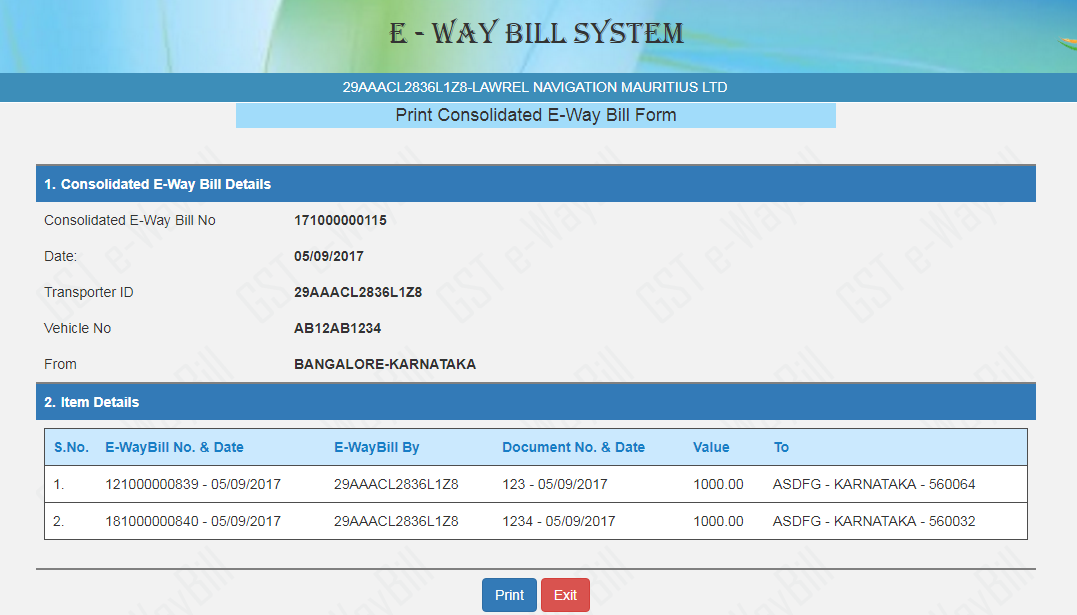Businesses Face Key GST
Reconciliation Challenge
Taxpayers under the Goods and Services Tax (GST) regime are
increasingly facing scrutiny when it comes to reconciling E-Way Bill data
with GSTR-9C turnover. The issue has gained importance as tax authorities
intensify data analytics and cross-verification measures in annual GST audits.
Businesses must ensure that transportation details in e-way bills match the
financial disclosures in GSTR-9C to avoid penalties, notices, or audit
disputes.
With the growing digitization of compliance, authorities can
now detect discrepancies between reported turnover and e-way bill records
faster than ever. This makes accurate reconciliation a crucial compliance
requirement for businesses of all sizes.
Evolution of GST Reconciliation
When GST was introduced in 2017, businesses initially
struggled with multiple filings, data mismatches, and limited awareness of
reconciliation practices. Over time, the government integrated systems such as
the GSTN portal and E-Way Bill portal to strengthen monitoring.
- GSTR-9C, the annual GST reconciliation statement, was
introduced as a mandatory filing for taxpayers with turnover exceeding ₹5
crore.
- E-Way
Bills became compulsory for
transporting goods valued over ₹50,000, capturing details like invoice
number, value, and distance.
Today, both datasets serve as powerful cross-verification
tools. Any mismatch between sales reported in returns and e-way bills generated
can trigger red flags. Comparisons with past years also show rising compliance
pressure as automation reduces the scope for errors and concealment.
Key Figures and Compliance
Statistics
- E-Way
Bill system coverage: Over
300 million e-way bills generated annually across India.
- Thresholds: Mandatory for goods movement above ₹50,000, regardless
of distance.
- Turnover
linkage: GSTR-9C reconciliation
required if annual turnover > ₹5 crore.
- Mismatch
detection rate: According to government data,
nearly 15–20% of businesses face discrepancies during GST audits
due to poor reconciliation practices.
- Penalties: Non-compliance can result in penalties up to ₹25,000
for inaccurate e-way bill records and further consequences under GST audit
assessments.
Leadership and Regulatory Intent
The GST Council and the Central Board of Indirect Taxes and
Customs (CBIC) have repeatedly emphasized the importance of accurate
reconciliation. Officials have noted that integrating e-way bill data with GST
returns is part of the government’s data-driven compliance strategy.
A senior CBIC officer recently stated: “Taxpayers must
understand that GST is no longer a self-reporting system in isolation. With
interconnected databases, mismatches between e-way bills and GSTR-9C turnover
will directly lead to scrutiny.”
The government’s vision is to create a seamless audit
trail, minimizing tax evasion while improving voluntary compliance through
transparent systems.
Expert Analysis and Market Impact
Tax experts highlight that reconciliation challenges often
arise due to:
- Timing
differences between invoice generation and goods movement.
- Clerical
errors in e-way bills such as incorrect invoice values or GSTIN.
- Inclusion
of exempt or non-supply transactions in turnover that may not require
e-way bills.
From a market perspective, reconciliation has both
compliance and operational implications. Businesses that invest in automated
ERP-GST integration tools are better positioned to avoid mismatches.
Meanwhile, small and medium enterprises (SMEs) relying on manual processes face
higher risks of notices and penalties.
Industry analysts believe that improved reconciliation
practices will reduce litigation, streamline audits, and enhance the
overall efficiency of India’s tax ecosystem.
Implications for Stakeholders
For the Public (Taxpayers):
- Ensures
transparency and reduces the risk of audits or penalties.
- Builds
credibility with vendors and customers by maintaining clean records.
For Businesses:
- Helps
avoid working capital blockages caused by disputes or penalties.
- Strengthens
financial reporting and eases statutory audits.
- Encourages
adoption of technology-driven solutions for compliance.
For the Economy:
- Supports
the government’s drive for higher GST collections.
- Promotes
a level playing field by curbing tax evasion.
- Enhances
investor confidence in India’s tax system.
Common Misunderstandings
- E-Way
Bill and Invoice Value are the same:
In reality, e-way bill values may differ due to freight, insurance, or
exemptions.
- All
transactions require e-way bills:
Not true; certain exempted goods and small consignments are excluded.
- Reconciliation
is a one-time exercise:
Businesses must perform periodic reconciliation, not just at year-end.
- Software
alone ensures compliance:
Human review is still critical to catch classification errors or
omissions.
- Mismatches
are minor issues: Even
small mismatches can escalate into notices and penalties.
Future Outlook
The future of GST compliance is moving toward real-time
data matching. With the planned integration of e-invoicing, e-way bills,
and GST returns into a single ecosystem, reconciliation will become even more
automated.
Businesses should expect:
- Stricter
enforcement through AI-driven analytics.
- Increased
reliance on integrated ERP and GST platforms.
- Possible
reduction in filing complexity as systems converge.
- Greater
focus on preventive compliance rather than post-facto corrections.
In conclusion, reconciling e-way bill data with GSTR-9C
turnover is no longer optional—it is a central pillar of GST compliance.
Businesses that adapt quickly with robust reconciliation practices and
technology adoption will not only stay audit-ready but also gain a competitive
edge in India’s evolving tax landscape.

.png)
